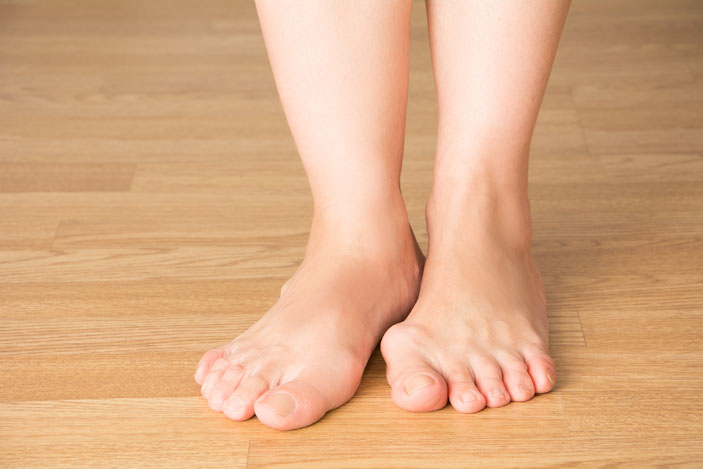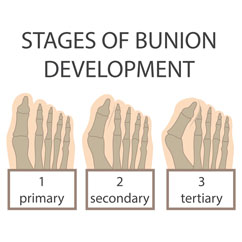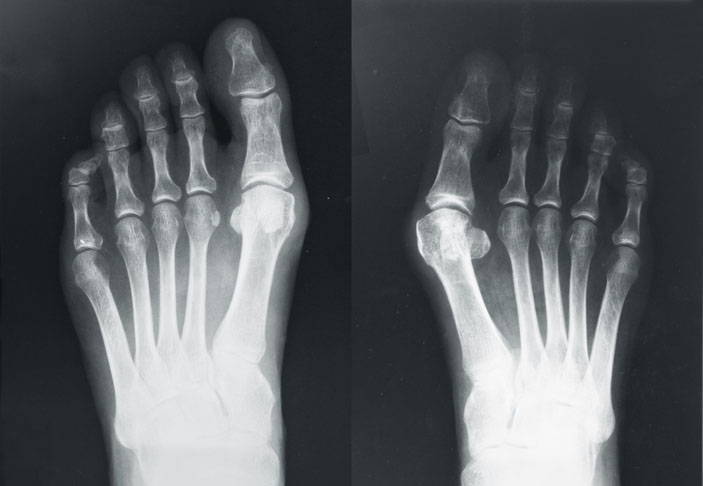A BUNION is a prominence at the inner edge of the big toe, usually rubbing against the instep of the foot. It is typically described as a bony swelling at the base of the big toe.
The majority of the patients develop bunion deformity later on in life, often in their 30s and beyond. The condition is not uncommon but there is a spectrum of severity from relatively mild bunions to having a crossover toe deformity, where the rest of the toes to start clawing up, resulting in hard skin on top of the lesser toes.

What causes the development of a Bunion?
There are certain medical conditions such as arthritis as well as when an ill-fitting footwear are worn that will distort the shape and bones of the foot. In such instances, the risk of developing bunions increases. Other factors that may contribute to the development of bunions are foot injuries, hereditary, and deformities present at birth.
Symptoms of Bunions
- A visible bump on the outside of the base of your big toe
- Swelling, redness or soreness around your big toe joint
- Corns or calluses
- Persistent big toe or foot pain
Decreased movement of your big toe or foot
“The prevalence is almost 13:1 females to male ratio of the same age with bunion deformity,” explains Dr Gowreeson Thevendran of Island Orthopaedic Consultants.
“The deformities are usually caused by a combination of factors. Acquired factors that may cause or worsen bunions include the type and duration of footwear and tightness of calf muscles,” added Dr Thevandran, who sub-specialises in foot and ankle, arthroscopic sports, and trauma surgery.
You Might Also Like To Read:
The Treatment Of Ankle Sprains
The Good And Bad Of Cholesterol
Under what circumstances should one seek medical advice?
A bunion can cause discomfort and pain in the joint area as well as under the ball of the foot. Although bunions do not require medical treatment in most cases, it is advised to seek a medical opinion from a doctor if you experience the following:

- Prolonged, persistent pain in the foot or big toe
- Visible bump on the big toe joint
- Inability to move the foot or big toe as actively as before
- Difficulty in finding shoes that fit due to the bunion
- If the bunion is changing the way you walk or exercise
What can one do to treat bunions?
The first line of treating a bunion usually include non-surgical methods. Bunions can be treated with wearing the right shoes, inserts, and other treatments to relieve pain. Examples of non-surgical options include:
- Avoiding tight or ill-fitting footwear
- Wearing a special padding over the bunion to reduce friction and pain
- Using orthotics (to be advised by a doctor)
- Ice-bathing the troubled foot
- Using anti-inflammatory medications
If left untreated, the damage to the joint may progress and turns harder to treat. Bunions can potentially lead to other problems such as bursitis, chronic foot pain, and arthritis in the affected joint.
The Healthy Way is a regular health series developed for STORM.SG by Healthway Medical. If you have specific queries, please do email us at health@storm.sg and we will ask the panel of experts for their advice. Do note that only selected queries will be addressed.
 What are the options for surgery?
What are the options for surgery?
Surgery is usually the last resort, but a foot and ankle specialist will be able to discuss the risks and benefits of different types of bunion surgery.
“The two types of bunion surgery are conventional shaving of the bunion and straightening out the big toe, and minimally invasive surgery of having small keyholes to shave the bunion,” explains Dr Gowreeson.
There is an early recovery period of 2-3 weeks after the surgery, medium-term recovery of 6-8 weeks and final recovery at 3 months where the swelling settles down.
Deciding whether or not to have surgery involves different factors. It is best to consult with your healthcare professional.
 Dr Gowreeson Thevendran is an orthopaedic surgeon with Island Orthopaedic Consultants. His sub specialty interest is minimally invasive foot and ankle surgery, trauma/fracture surgery and lower extremity sports injuries. He has a keen interest in cartilage regeneration and bioreabsorbable implants.
Dr Gowreeson Thevendran is an orthopaedic surgeon with Island Orthopaedic Consultants. His sub specialty interest is minimally invasive foot and ankle surgery, trauma/fracture surgery and lower extremity sports injuries. He has a keen interest in cartilage regeneration and bioreabsorbable implants.
Images: Shutterstock























